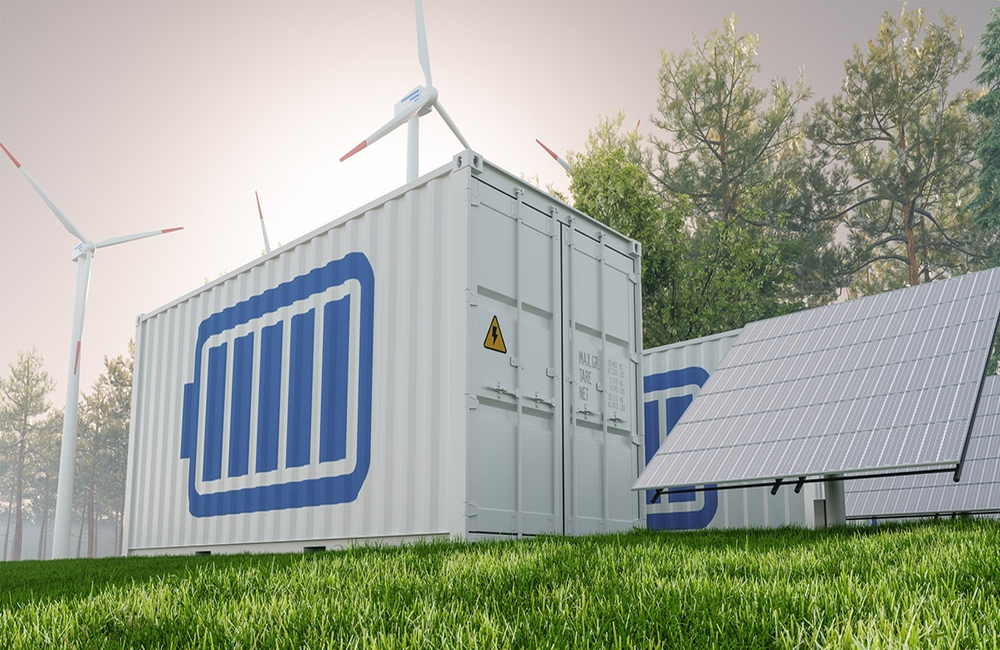The cost and limits on the availability of some key materials currently used in battery manufacture has put a floor under lithium-ion battery costs and may limit future deployment, creating demand for chemistries that use more earth abundant elements, a Massachusetts Institute of Technology study says.
Future of Energy Storage and Grid Flexibility
“Fossil fuel-powered plant operators have typically responded to demand for electricity in any moment in time by altering the power entering the grid,” said Robert Armstrong, MIT Energy Initiative (MITEI) director and chair of the study, in a statement.
“But variable renewable energy (VRE) resources like wind and solar are driven by daily and seasonal changes and weather variability; they can’t always be called on to follow electricity demand when needed,” Armstrong explained. The research concluded that energy storage systems can help balance power supply and demand in VRE-reliant systems while delivering reliable electricity in a cost-effective way—paving the way for electrification beyond the power sector.
Limitations of Lithium-ion Batteries
The study noted that lithium-ion batteries will continue to dominate electric vehicles and short-duration energy storage. However, their cost-per-kWh is unlikely to decline enough to make them viable for widespread adoption in long-duration electricity system applications of 12 hours or more.
Instead of conventional energy storage technologies, researchers advocate for exploring “novel electrochemical technologies,” including redox-flow and metal-air batteries. These alternatives utilize low-cost charge storage materials and designs optimized for long-duration use. While some architectures show promise, the study identifies “knowledge gaps” in science, engineering, and manufacturing that warrant strong government support.
Thermal Energy Storage Retrofit Opportunity
The study proposes a near-term solution in the form of thermal energy storage. By retrofitting existing fossil-fuel power plants—replacing their boilers with thermal storage units and new steam generators while reusing existing steam turbines—plant owners can implement this strategy using commercially available technologies today.
“This retrofitting can be implemented today... and it represents an attractive option for plant owners and local communities as a means to utilize assets that otherwise would be idle and/or abandoned as electricity systems decarbonize,” the study said.
Impacts on Power Prices and Financing
The shift to zero-fuel-cost renewables will make time-of-use pricing more crucial, with prices rising during scarcity and falling during abundance. “The hourly distribution of wholesale energy prices or marginal value of energy will evolve in deeply decarbonized bulk power systems,” the study said.
These systems, dominated by VRE and storage, will have high fixed costs and low marginal operating costs, resulting in more hours of very low or even zero prices and some hours of higher prices. The study projects a sharp increase in hours where marginal system costs fall below $5/MWh, especially as emissions limits are tightened.
This new dynamic will create financing challenges for renewable and storage projects. The limited number of high-price hours, compounded by potential regulatory price caps, may prevent full cost recovery, the researchers warn.
Consumer Pricing and Load Management
The study highlights that these changing price patterns reinforce the importance of retail pricing models and load management programs. Encouraging consumers to shift electricity use from high-price scarcity periods to low-price abundance periods will help balance the system and support decarbonization of other sectors through clean electrification.
The study was funded by the Alfred P. Sloan Foundation and the Heising-Simons Foundation, with additional support from MITEI members Equinor and Shell.



















